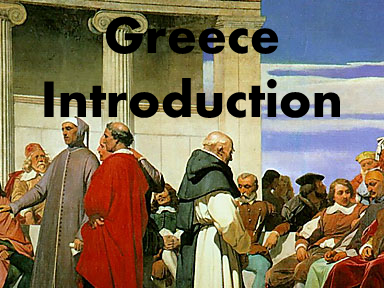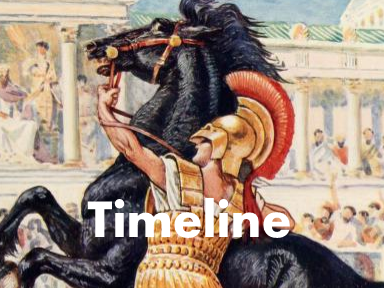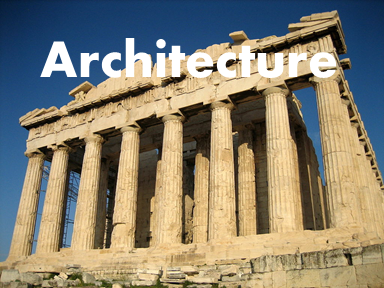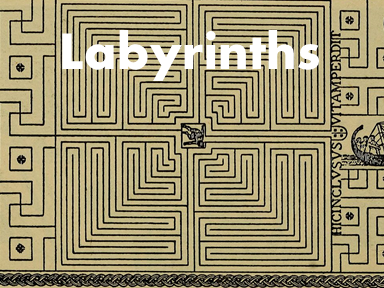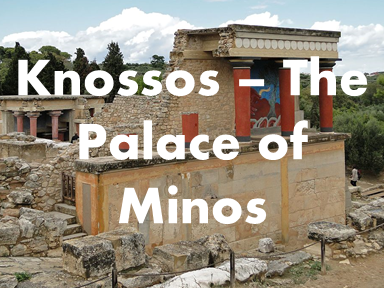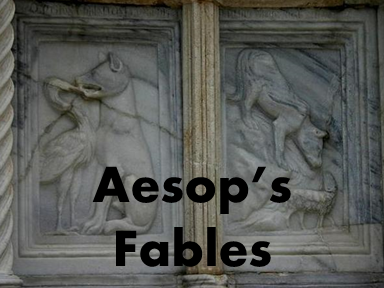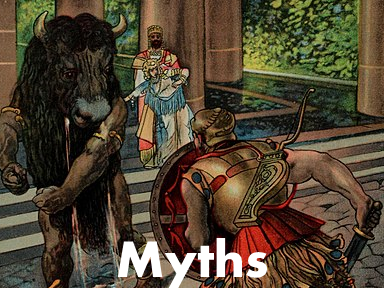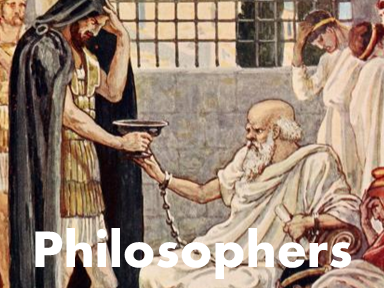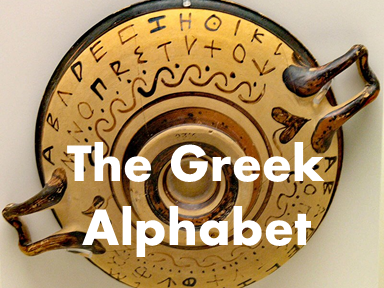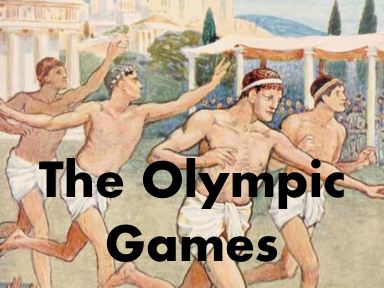
Ancient Greece The Beginnings of a Civilization
The first major civilization in the Mediterranean area was the Minoan Civilization. It was named after King Minos and began about 2500 BC. The Minoans were skilled architects who built beautiful palaces. They were masters at jewelry and pottery making. They developed a system of writing. Archaeologists believe the Minoans landed in Greece and colonized parts of it. The Greeks imitated the Minoan style of architecture and pottery

Mask of Agamemnon made of repoussé gold (c 1500 BC) found in shaft tomb at Mycenae National Museum, Athens
In 1646 BCE, a massive volcanic eruption took place at Thera (present day Santorini) on the island of Crete. This eruption was approximately 100 times more powerful than the eruption at Pompeii. The Mineoans became weak after losing as many as 20,000 people, their ships, and the interior of the island of Crete.
A Greek-speaking people called Mycenaeans after their largest city Mycenae became stronger. Finally the Mycenaeans landed in Crete and took occupation of Knossos. Knossos was later destroyed by fire around 1300 BCE. The Mycenaeans took control of the eastern part of the Mediterranean. Their greatest centers were at Mycenae, Tiryns, and Pylos.

Lion Gate of the Citadel of Mycenae (c1300 BC)
From the ruins at Mycenae, archaeologist learned that the Greeks traded with the Egyptians during this period. Some scholars believe that the Iliad and the Odyssey are stories written about the warriors during the Mycenaean Age.
From 1100 to 800 BC, Ancient Greece went through a dark age. This started when a number of tribes from the north invaded the area. At this time, the Greeks lost touch with the surrounding countries. Simplified versions of the old Mycenaean and Minoan pottery were produced. Metal craftsmanship was basic.
In about 800 BC, the people of Greece began to emerge as a world power. The people developed a more advanced written language. Trade and travel among the countries lining the Mediterranean Sea started again. Pottery and metalworking became works of skilled craftsmen. The city-states of Athens and Sparta became powerful rivals. The population in Greece dramatically increased. Many Greeks moved to the new lands to the east and west to find more land. Written language re-emerged. Coins were invented by the East Greeks or Lydians. The Doric and Ionic architectural types of architecture were established with the building of the Greek temple.

Map of Greek and Phoenician Colonization about 550 BC
In 600 BC, the people of Athens began many building projects. Attica dominated the pottery market. Corinth became a wealthy city-state.
Democracy began in Athens after the tyrant Peisistratid fell from power. At this time, the large statues of nude males called kouroi and draped females called korai were being produced for sanctuaries and as markers for graves. Huge marble temples were being constructed.
In 490 BC, the Greeks teamed together to fight the Persians. Four main battles were fought:
- Marathon - August/September 490 BCE - Greeks won.
- Thermopylae - August 480 BCE - Persians won.
- Salamis - September 480 BCE - Greeks won.
- Plataea - August 479 BCE - Greeks won.
The Greeks finally defeated the Persians in 473 BC.
The next period from around 500 to 300 BCE was called the "Golden Age of Greece." It is during this time that great works of art, architecture, and drama were developed. From 472 - 410 BCE Greek theatre thrives in Athens. Some of the most famous Ancient Greek playwrights wrote during this time.
- Aristophanes - wrote from 427-380s - 44 comedies
- Aeschylus - wrote from 498-458 - around 89 plays
- Sophocles - wrote from 468-406 - a total of 123 plays
- Euripides - wrote from 455-406 - 19 plays survived
Several great philosophers lived in Athens during the Golden Age.
- Socrates (c. 469-399 BC)
- Plato (c. 427- c. 347 BC)
- Aristotle (384 - 322 BC)
There were many great building projects during the Golden Age of Greece. The most famous is the Parthenon built c. 447 BC-432 BC. The cost of the Parthenon is equal of $3 billion in money today. This huge temple had a huge gold and ivory statue of Athena inside it.

Poseidon from Artemision (c460 BC) in cast bronze from the Athens, National Archaeological Museum

Charioteer from Delphi (c470 BC)
In 431 BC, Sparta attacked Athens. This was the beginning of the Peloponnisian War. This war lasted for 27 years. In 338 BC, Philip of Macedonia defeated the Greek city-states and united Greece under his rule. His son, Alexander the Great, invaded Persia and increased the Greek Empire all the way from Egypt to India. Greece remained a world power until 146 BC when it was conquered by Rome.
